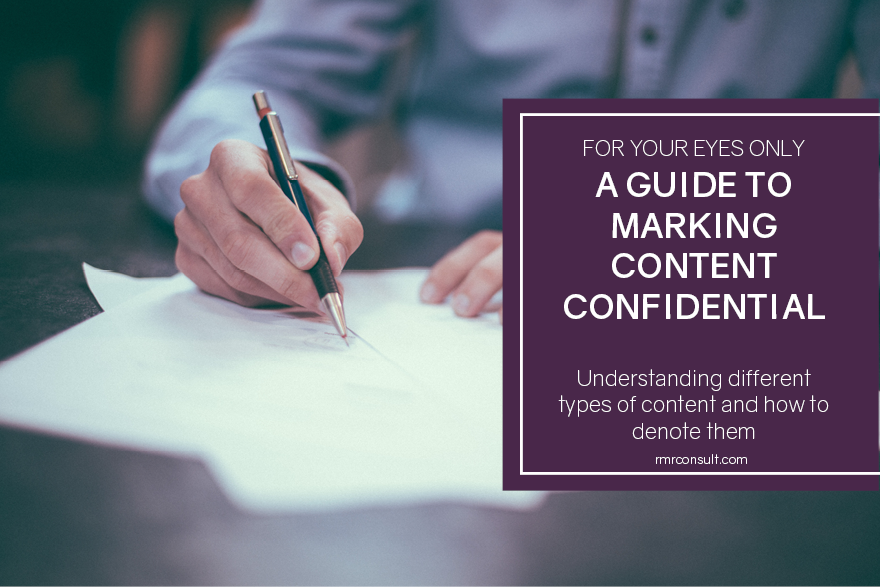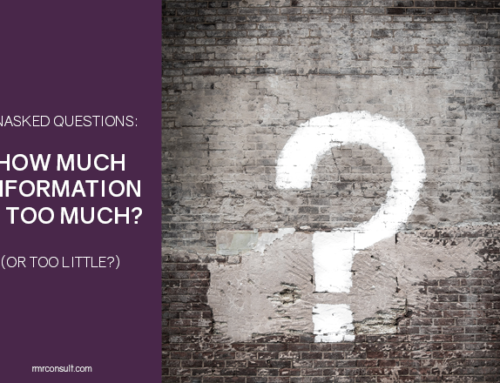For Your Eyes Only: Marking Content Confidential
Do you mark content in your proposal ‘confidential’ or ‘proprietary’? It’s not an uncommon practice for many businesses, especially when RFPs require copies of documents relating to business operations, trade secrets, or financial stability. Whether you are or aren’t in the practice of denoting parts of your proposal as proprietary, this simple guide will help you determine what content can or should be restricted and how to do so.
Why is Marking Content Confidential Important?
If I asked you to give me your latest pay stub, or a copy of your mortgage, or your most recent income taxes before I hire you for a project, would you hand them over without question? Or would you need reassurance that your information would be protected? Perhaps that’s not the best example, but it gives you an idea of how your business should feel about turning over sensitive information.
Unless you work exclusively in the private sector, your proposal is most likely going to become a public document. For instance, if you submit a proposal to a publicly funded entity like a school district or local municipality, your proposal becomes public record. This technically means that anyone could ask to see it at any time, and is the reason that when you debrief, you are allowed to see copies of your competitors’ proposals. This also means your competitors are allowed to see copies of your proposals.
Different organizations have different rules for what they make public. Because we can’t always know what these rules are (or how they’re actually enforced) it is a best-practice to clearly mark any information we don’t want accessible to the public as ‘confidential’ or ‘proprietary’. Scroll through the gallery below for a few examples.
Types of Confidential Marketing Content
The most common types of content I see marked confidential usually relate to trade secrets or business documents proving financial stability or capabilities. Consider restricting access to the following types of content as you write your proposals:
- Financial Statements/Business Documents – While a client has a valid argument for seeking information regarding the health of your business, the public and your competitors don’t. Consider marking anything relating to your business operations and financial status private. This may include your current volume of work as well, especially if you are asked to divulge information on your current clients.
- Trade Secrets – Many businesses have unique processes, custom software, or other elements of their business that make them successful. These business operators can often be considered trade secrets and should be protected. If simply referring to ‘propriety software’ or your ‘proprietary process’ won’t suffice in a proposal, be sure to mark any pages divulging specific details about your proprietary data confidential (or proprietary).
- Designs/Plans – Some clients ask for proposed designs or initial planning documents with their proposal. If your proposal called for a design or initial planning documents, you might not want that information to be available to your competitors. Marking this type of content confidential will help to ensure a variation or component of your design doesn’t end up being used by a competitor.
- Client Information – Many clients wish to remain anonymous or undisclosed for a variety of reasons. The most common of which is the type of project – secure facilities, data centers, or mission-critical projects are ones that most clients prefer to keep private. If possible, restrict as much identifying information as you can for these clients and projects, and if you must divulge details, mark any page relating to them confidential. This is especially important if your firm has been required to sign an NDA with a client.
How to Denote Confidential Marketing Content
Many RFPs will have specific requirements for how to mark content confidential, so be sure to read these carefully. If the RFP does provide specific instructions, here are a few ideas for denoting confidential marketing content:
- Watermark
- Stamp
- List of Confidential/Proprietary pages included in the Table of Contents or Appendix
- Restrict, redact, or remove pages for digital copies of your proposal*
- Use vague language like ‘our proprietary software’ or ‘confidential client in undisclosed location’
*Note: Digital proposals are often required to be identical to printed copies, so be aware of how much content you remove. Some RFPs will require confidential documents still be included on a thumb drive or CD but as separate files from the core proposal.
Can You Mark an Entire Proposal Confidential?
Technically, yes, I suppose you could in some cases. Most public clients cannot accept completely confidential proposals due to public disclosure requirements, and most don’t have the ability to remove multiple sections of confidential content before filing a proposal. Ultimately this means that if your entire proposal is marked confidential, or if large sections of it are, it will either be dismissed as non-compliant or will be filed away and may not be kept as confidential as it should.
Before you mark your entire proposal confidential, consider how much of it actually needs to be restricted. Do you have resumes, projects, or narratives in your proposal that can be found on your website? If so, those don’t need to be restricted. If you are adding additional information to these projects that may be considered confidential, try using vague language first (i.e. rather than disclosing sensitive client information on a project sheet, try titling it something like “Fortune 500 Financial Institution Data Center, USA” and be sure to remove any identifying information in the description).












Leave A Comment